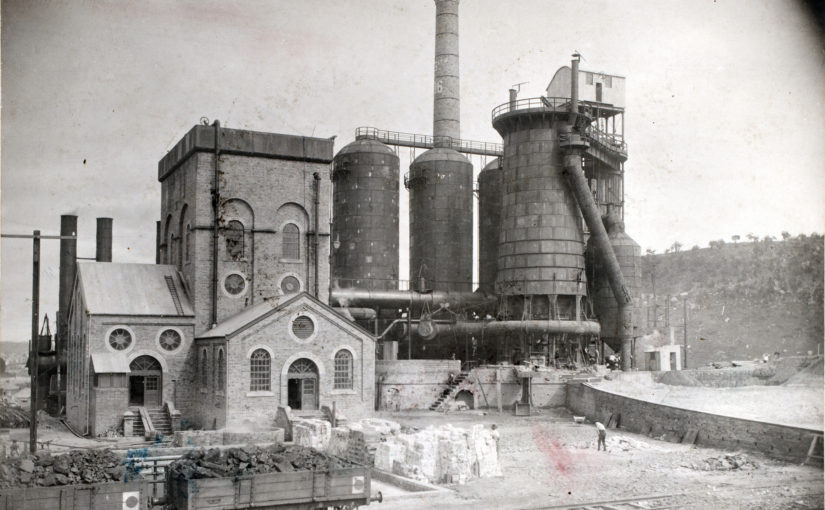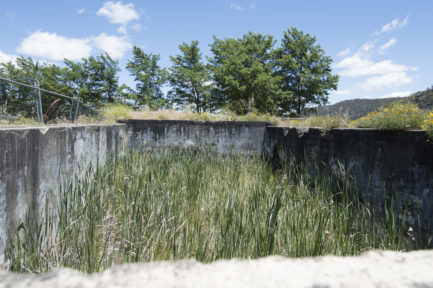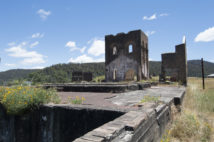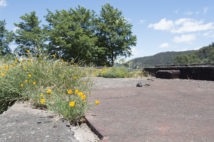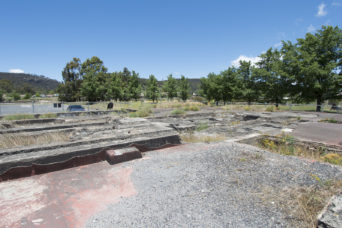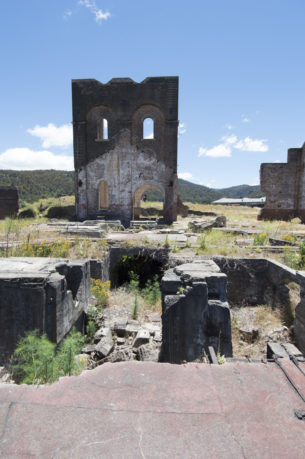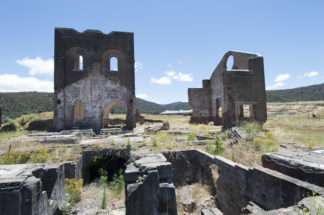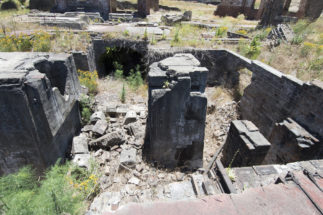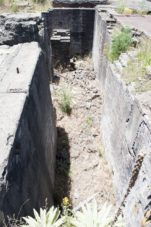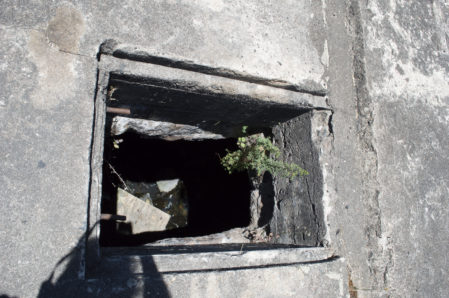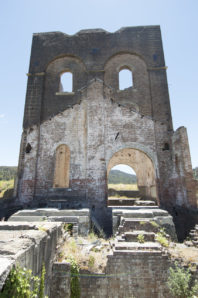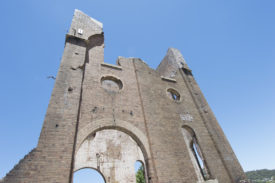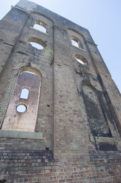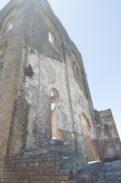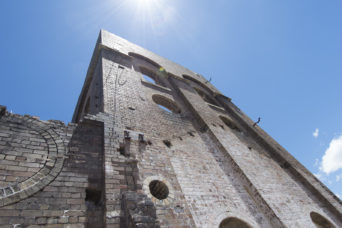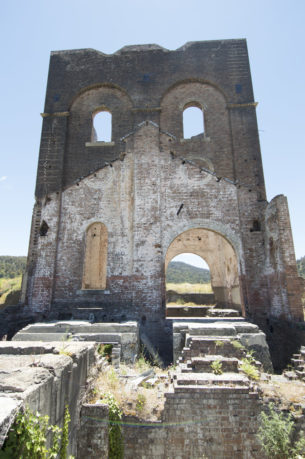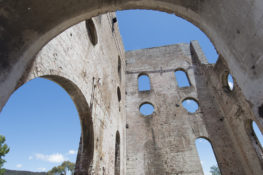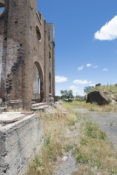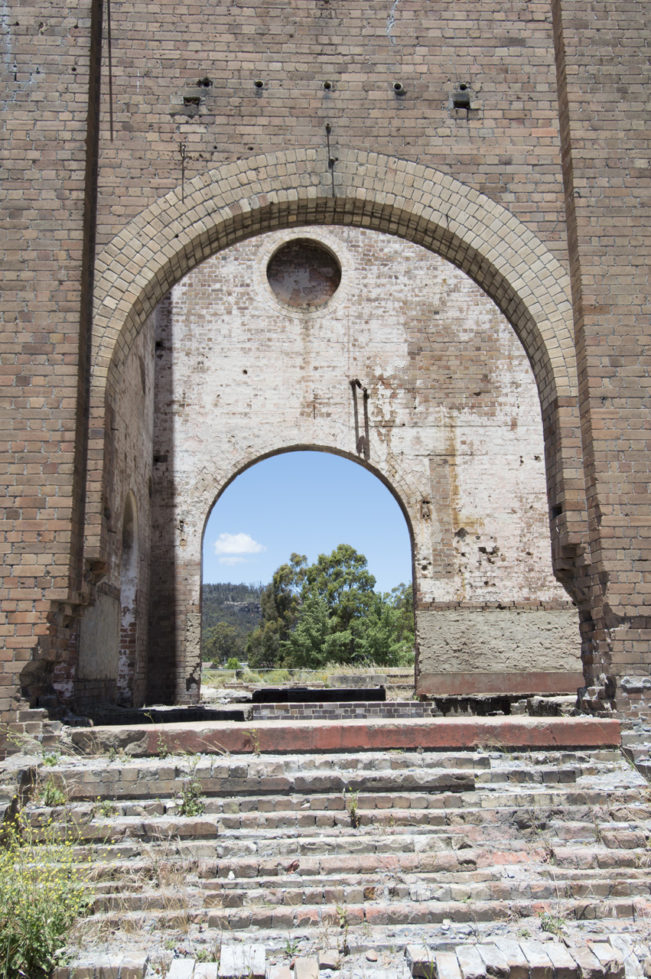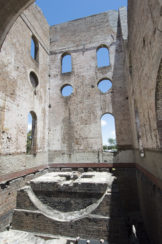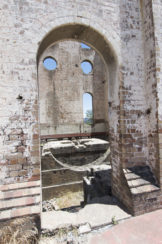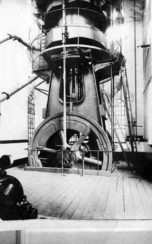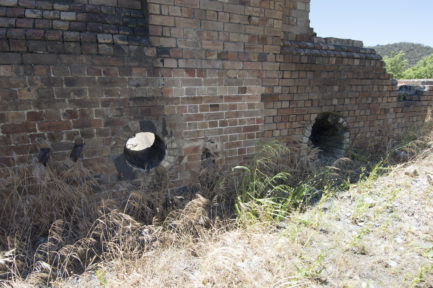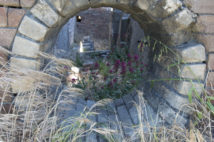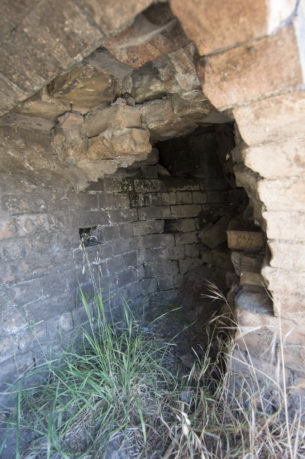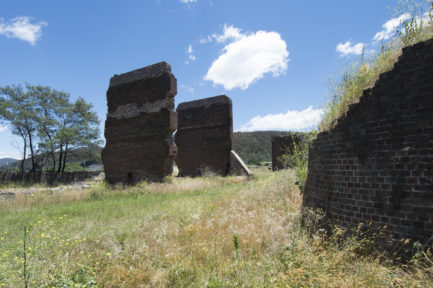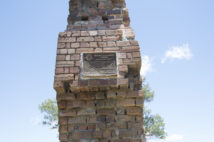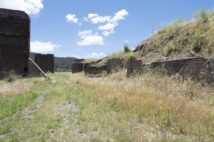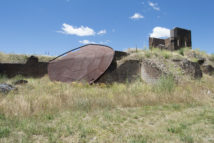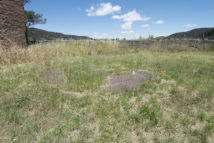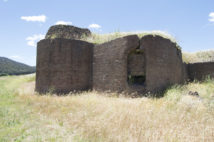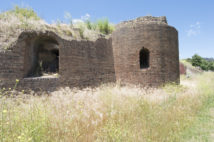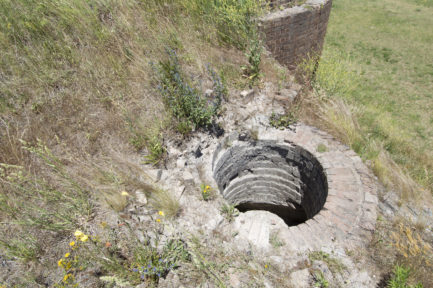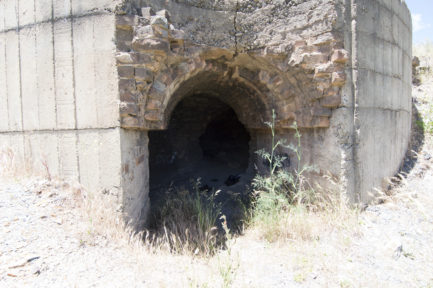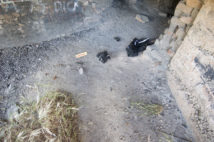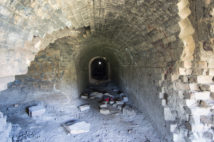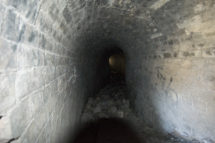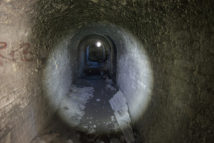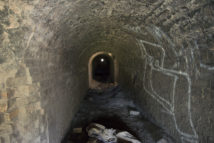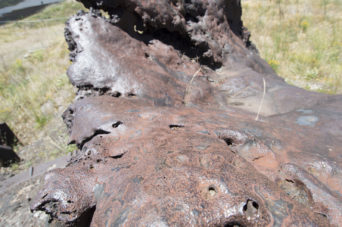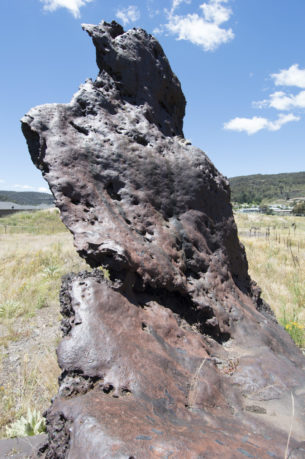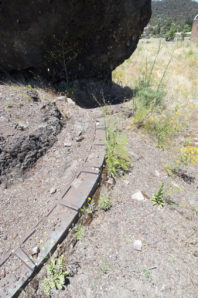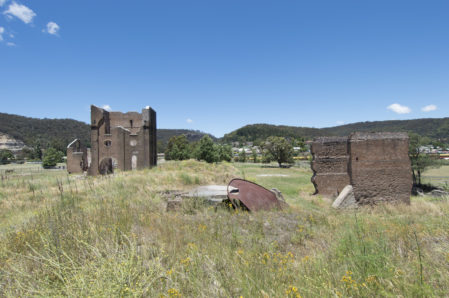I’d visited this site many years ago. Back when photos were made with film and dinosaurs still roamed the countryside. So I thought it would be a good to go back and take some shots that I could share on the internet.
So what’s the deal with this site?
Lithgow and this Blast Furnace record the beginning of the iron and steel industry in Australia. The furnace was established in 1886 by William Sandford and operated until 1928 when production was moved to Port Kembla. The site has now been converted into a park around the remains of the pump house and the furnace foundations. There is a pleasant walk around Lake Pillans Wetland adjacent to the park. [1]
Yup, this site is where Australia started its steel industry. A pivotal part in growing Australia and one that kicked off the beginnings of BHP.
I travelled two and bit hours out of Sydney, over the Blue Mountains on a day when the breeze was cool and the sun warm on a perfect sunny day. Thankfully, my GPS prevented me from getting too lost and took me to the car park located at what’s called “The Blast Furnace Park”. It was completely empty except for the weeds and flies. The site of the ruins are now also surrounded by a temporary fence. One that had been knocked down in many places so I could simply walk in.
Once you enter the site the first thing you see are the leftovers of the brick structures of the pump house. The majority of the site was demolished after it was shut down. Before you get to the buildings you have to pass a huge concrete slab. This slab is riddled with holes and tunnels. Most are full of water so I didn’t venture in or they were too small to fit. Walking around, you can imagine just how intricately designed this place was with its pipes and tubes pumping air and heat to furnaces. Looking at the old photos of this site you can see how complicated this giant machine used to be. Because that’s what this was, a massive machine built to melt metal. Nowadays, it’s quiet and covered in wild flowers.
Once you pass the slab, you get to the main building. This was built to house the the massive pump for the furnace. You’ll find an image of it below and were it sat. This machine pumped the air for the furnace, it was also the first steam powered turbine in Australia. The building is now just a shell, but it is so pretty with its weird mix of windows, circles and doors. Most of the small round windows were for piping to enter the building to power the pump and outlets back to the furnace and turbine. There are no floors, no roof just a massive hole in the ground.
The photos below show what’s inside. Centred in the middle is the pedestal that supported the massive pump. I’ve also included a shot of the pump when it was installed.
Below are some photos of the various pipe holes you’ll find around the building.
Off to the side of the pump house is another huge slab. This housed the main works of the site but today resembles more of a buried Roman ruin. Hardly anything is recognisable but in this area, the main furnace was housed and this is where the business was done. I noticed a little outlet and ramp. I have no idea what it was used for but the ramp is made of heavy cast iron. I stuck my head in but was greeted by a dead end.
So I started walking around and saw these two massive columns. To the right on the slab is a huge metal ‘lid’- it’s bent over the roof of the slab. Just near is another lid, lying in the grass and slowly being buried. This area also has a few tunnels. Be careful if you do visit here, its a junkies shooting spot and this bastard is the type of junkie to leave needles on the ground. Damn junkies.
So this is what you want, TUNNELS!! Like I said, there are junkie problems but once you pass this you enter a fairly big tunnel. It branches off into several directions, but unfortunately all of these end in rubble. I have no idea what they were used for, I hope someone reading can help out. I think it may have been ventilation? There seemed to be chimney hole in one part.
Finally on top of the slab is what looks like a huge iron base plate. Sitting on top is a huge chunk of slag which is one of the iconic images of this site. It’s massive.
So that was my visit. I feel next time I return it will be drastically changed as the local council makes it safer for people. Which no doubt will mean filling in all the fun places. But who knows, Lithgow is now a quiet country town and its been ten years since my last visit, and the only changes I can see made in that time is the temporary fencing.

